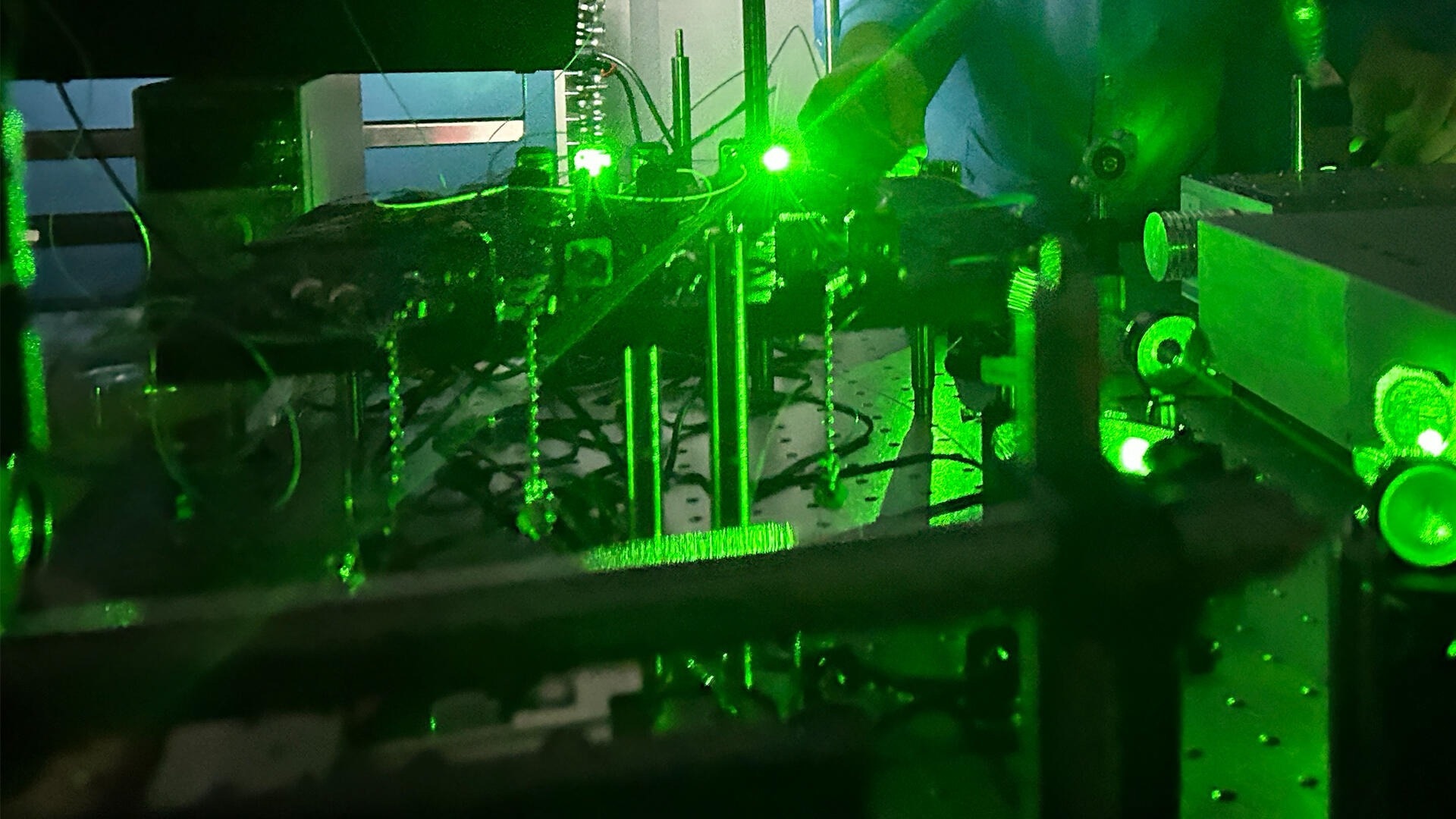By harnessing laser light, scientists have devised the most robust technique currently available for managing individual qubits composed of the chemical element barium. This capability to consistently control a qubit represents a significant milestone in the pursuit of realizing practical quantum computers in the future.

Image Credit: University of Waterloo
This newly-developed technique at the University of Waterloo’s Institute for Quantum Computing (IQC) makes use of a small glass waveguide to isolate laser beams and further focus them four microns apart, around four-hundredths of the width of a single human hair.
The accuracy and extent to which every focused laser beam on its target qubit could be regulated in parallel is incomparable by earlier research.
Our design limits the amount of crosstalk–the amount of light falling on neighboring ions–to the very small relative intensity of 0.01%, which is among the best in the quantum community. Unlike previous methods to create agile controls over individual ions, the fiber-based modulators do not affect each other.
Dr. K Rajibul Islam, Professor, Department of Physics and Astronomy, Institute for Quantum Computing, University of Waterloo
Islam added, “This means we can talk to any ion without affecting its neighbors while also retaining the capability to control each individual ion to the maximum possible extent. This is the most flexible ion qubit control system with this high precision that we know of anywhere, in both academia and industry.”
The scientists targeted barium ions, which are turning out to be highly famous in the field of trapped ion quantum computation. Barium ions consist of convenient energy states that could be utilized as the zero and one levels of a qubit and be manipulated with visible green light.
This is dissimilar to the higher energy ultraviolet light required for other atom kinds for the same manipulation.
This enables scientists to utilize commercially available optical technologies that are not available for ultraviolet wavelengths.
The scientists made a waveguide chip that splits a single laser beam into 16 various channels of light. Further, each channel is directed into separate optical fiber-based modulators, offering agile control over every laser beam’s frequency, intensity, and phase separately.
The laser beams are focused down to their small spacing utilizing a range of optical lenses that look like a telescope. The scientists verified each laser beam’s focus and control by quantifying them with accurate camera sensors.
This work is part of our effort at the University of Waterloo to build barium ion quantum processors using atomic systems. We use ions because they are identical, nature-made qubits, so we don’t need to fabricate them. Our task is to find ways to control them.
Crystal Senko, Co-Principal Investigator and Faculty Member, Institute for Quantum Computing, Department of Physics and Astronomy, University of Waterloo
The new waveguide technique illustrates a simple and accurate method of control, thereby displaying promise for using ions to encode and process quantum data and also for implementation in quantum computing and simulation.
Journal Reference
Binai-Motlagh, A., et al. (2023) A guided light system for agile individual addressing of Ba+ qubits with 10−4 level intensity crosstalk. Quantum Science and Technology. doi.org/10.5281/zenodo.8164726.